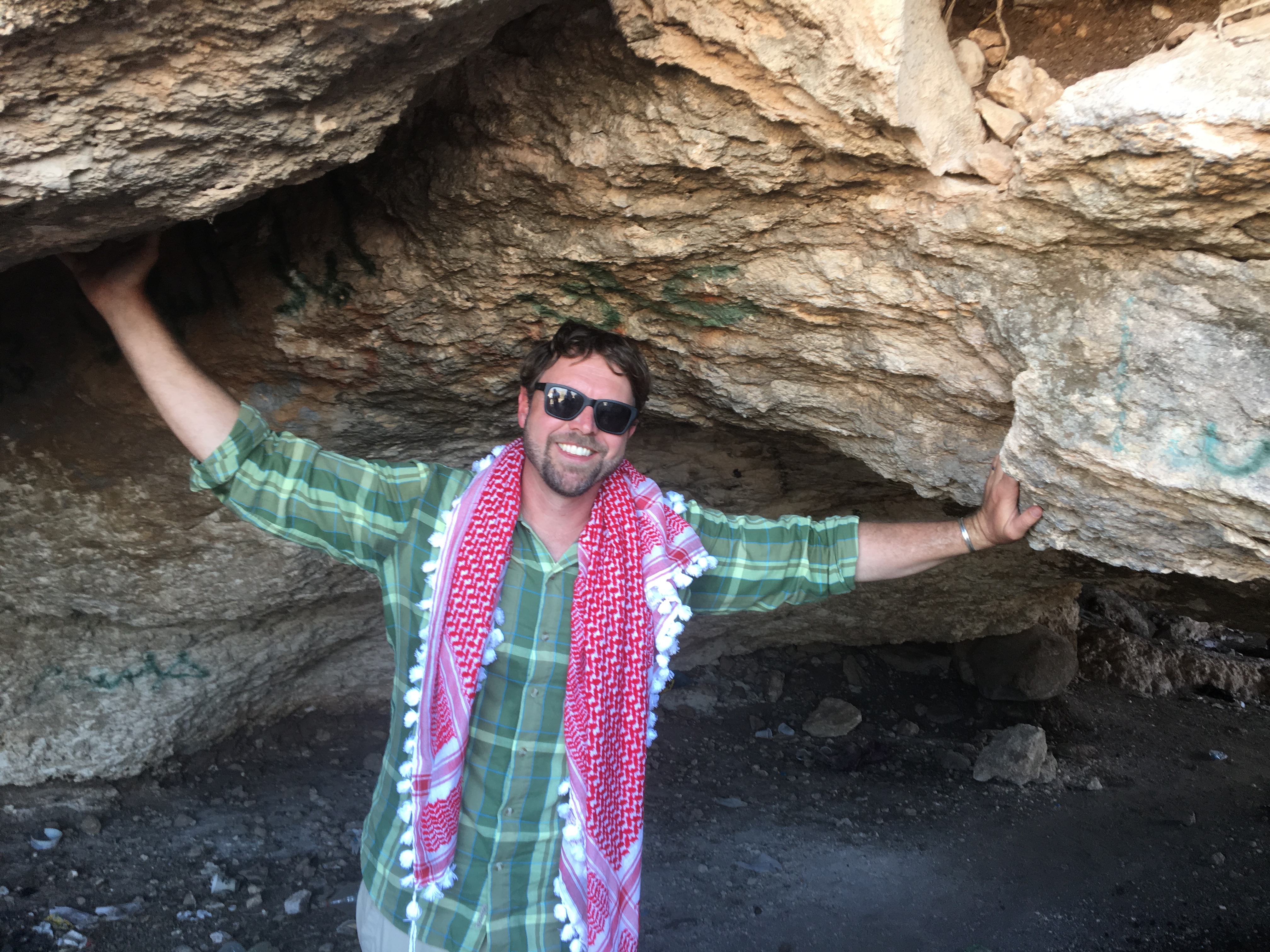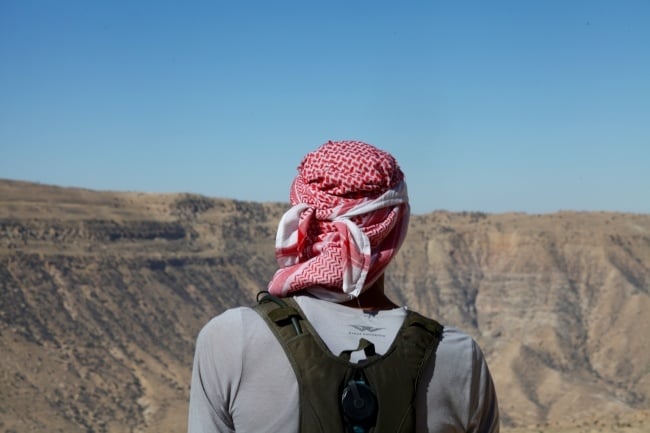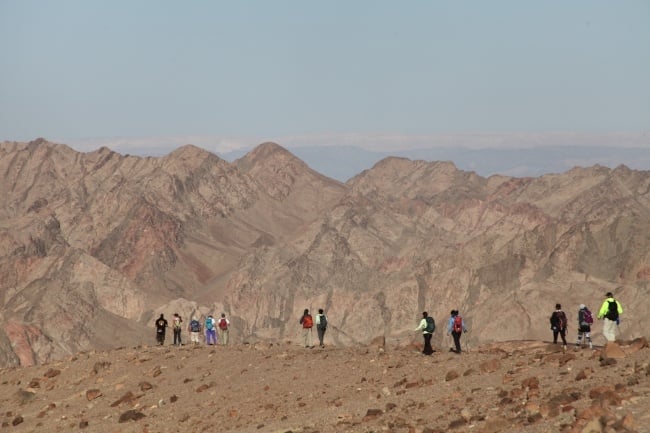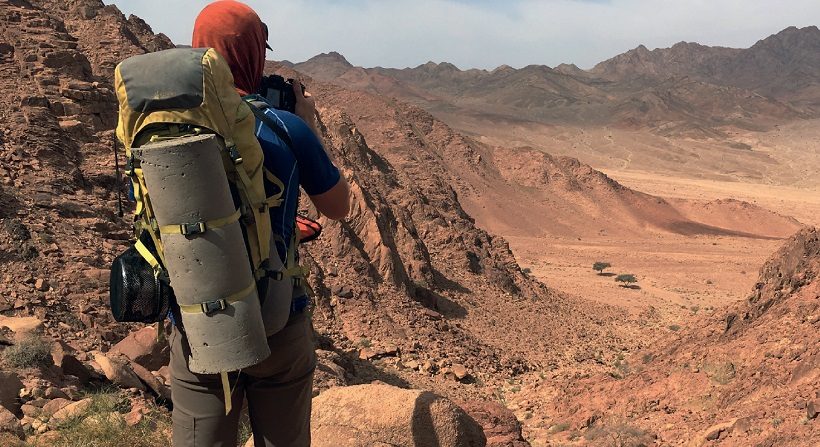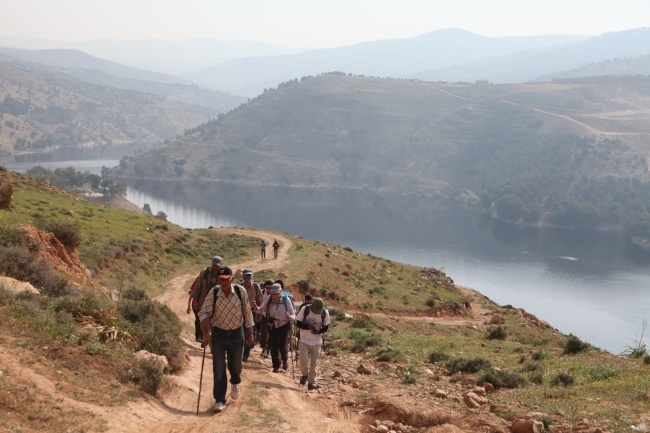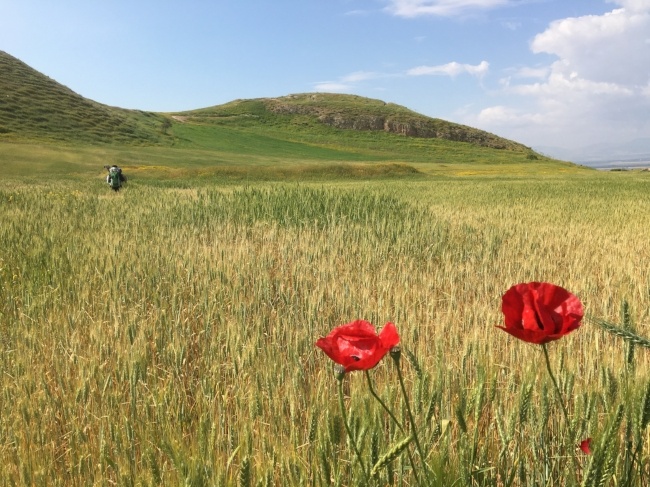 Land of Many Colors
Land of Many Colors
If the Jordan Trail resembles the Jordanian flag, then I have just crossed the broad green stripe.
Every day the path turns greener, as if some divine hand has Photoshopped the landscape, dialing up the brightness to an implausible green that demands sunglasses and a long afternoon rest in the shade of a jujube tree. Already, we have enjoyed a few passing moments of rain and watched the land respond with life and a million rustling leaves. At times, the sky resembles a grey watercolor of swirling clouds—at other moments it glows empty and blue.

The Jordan Trail reminds me how much I have missed nature—I cannot remember the last time I dropped to my knees to admire a flower up close, but here, on the trail, the flowers are bright enough to make you stop and look. By the second day, I had grown used to the endless fields of red poppies and yellow daisies, but on the third day, while trudging uphill on a particularly steep and rocky climb, I encountered my first black iris—the rare endemic species that is also the national flower of Jordan. The deep midnight purple flower is astonishing, but after seeing them one after the other, I grew used to their abundant black beauty and kept walking.
It turns out that Jordan is not a flat country at all, but rather, a very up-and-down place, with some big drops and magnificent climbs that I have felt with my own ankles and thighs. On our second day, the path descended smoothly (contributing to a false confidence for the long walk ahead) and on our third day, we hiked all day just to get back up to sea level. On our sixth day we covered 3,000 feet (1,000 m) of ascent, so that I felt that I deserved some kind of prize for merely walking up a hill.
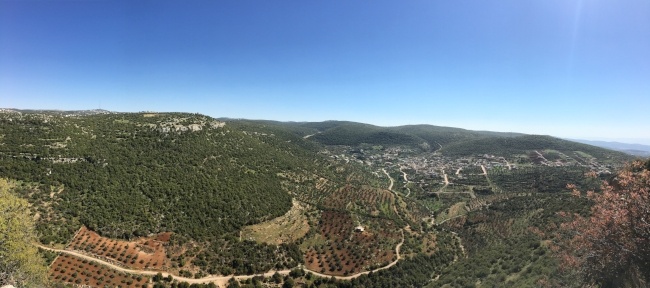
The Benefit of Traveling by Foot
And yet the real reward comes at the crest of each mountain, with epic panoramas that reach out forever—a vision of the Earth that evades any traveler who sticks to the paved road. Committing to this particular transect of the country is to let go of any notion of sightseeing in exchange for the unexpected gifts of the open trail. As hikers, we might encounter some lesser-known Greco-Roman ruins, a crumbling Ottoman-era mosque—or remnants of a much older civilizations going back twelve thousand years ago. Perhaps we meet a curious shepherd, surprised by our sudden invasion of his pastoral world, but welcoming us all the same, sitting down to share tea with us, and waving goodbye as we carry on—or a pair of women, mixing clay and straw by hand and building a taboun (clay oven) to bake bread—or perhaps a tiny baby lamb, born just a moment before we arrived, still wet from the womb and gulping up each new breath, blinking its shiny black eyes in the sun. None of these things are in guidebooks—there is no TripAdvisor review for happening upon a just-born lamb in the verdant highlands of Jordan, or dining outside, on the ground, with ten fellow hikers, munching olives picked from the trees of our kindly host. These things only happen to those who make the time for anything to happen—for those who travel by foot.
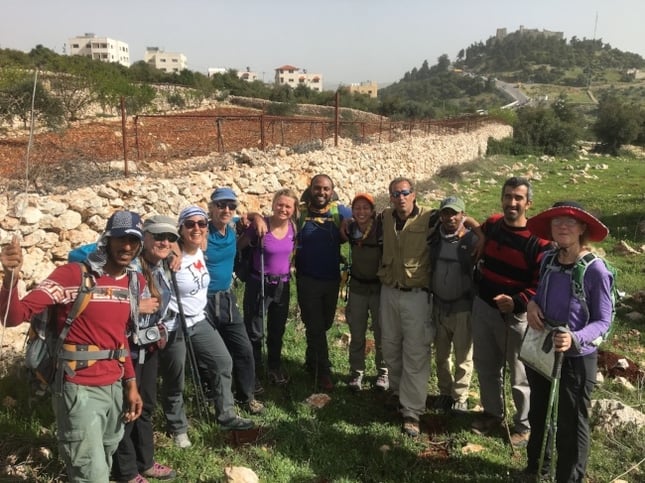
Seven days in and we are still a merry band of hikers. Some only join in for the day’s hike—like the family with three small children who gifted us with their burst of energy, encouraging us all to scramble upwards and onwards. Other times we are blessed with the company of locals—people who know this land well and are proud to share it with us, showing me plants, trees, and animals that I would have never known on my own. Other hikers have come to march several sections of the trail, like Hadija, who celebrated her 66th birthday this week, who already completed the entire trail last year, and who reminded me on the first day to be sure and replenish my salts.
We are especially fortunate to be in the company or Di Taylor and Tony Howard—the real godmother and godfather of the Jordan Trail. Tony and Di were some of the first modern-day visitors to start mapping and publishing the walking trails around Jordan, and their vision for a nationwide trail dates back more than 30 years. It was Di who smartly advised me to, “Follow the sheep, Andrew,” pointing to the telltale zigzag of the many sheep who have walked before me. “They know the best way down a mountain,” she explained, and she is right. To step off the trail is to second-guess the sheep that have lived here and walked these mountains since the Book of Genesis.
Changing Tempo
Slowly but surely, my body is adapting to this natural tempo of the Earth. Now I wake up with the sun, and find myself dropping off to sleep at around 8:00 pm, exhausted by the day’s physical exertion, glad to lie down horizontally for a spell and to stretch out my legs. There is a rhythm to the trail that is separate from the busy lives we build with technology. Indeed, this first week hiking has been an exercise in serenity, where every step takes me further away from the stressful world of headlines, calendars, and industry.
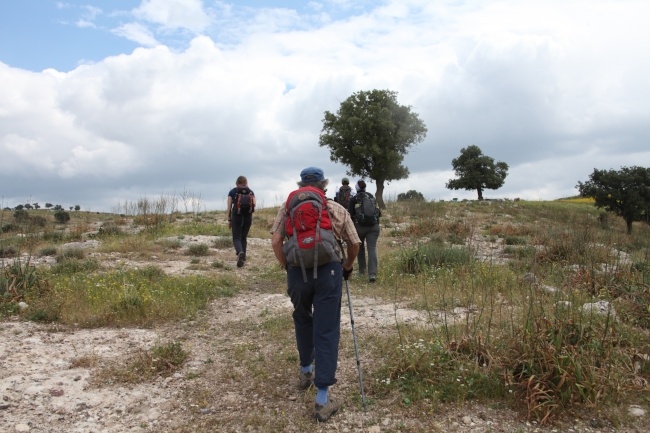
Hiking the trail is a different kind of work—already I feel my lungs and legs growing stronger. Every mile is a new dance—my boots have tromped through grass, wheat, and flowers; over loose stones, and crumbly, red-brown soil. A few times, I have leapt across a glassy wadi, clear with an inch of moving water, or lifted myself atop some giant limestone boulder, perched for a moment on one leg. Above all, I love the mental luxury of long reflection, where my mind can wander as freely as my feet. Whether it's the earnest tortoise laboring across the path, or the birthplace of the Prophet Elijah in Tishbeh—every bit of the Jordan Trail inspires the kind of open thinking that television and smart phones erase. Without a doubt, hiking the Jordan Trail is one of the most peaceful journeys I have made.
It is also one of the most delicious, which is convenient, since I have acquired the appetite of a teenage athlete, eagerly accepting any snack that is offered: thick, sweet dates and dainty date cookies; tart green almonds pulled from a tree and light green chickpeas, purchased from the back of a farmer’s truck and shelled one by one, off the vine. We breakfast on steamy fresh bread and creamy hummus, olive oil, and soft white cheese. I wash it down with gallons of water, and now I believe my sweat smells like za’atar (the quintessentially Jordanian herb blend of salt, pepper, thyme, and toasted sesame seeds).
-893587-edited.jpg)
After every meal, we march, climbing uphill and gazing across the next valley with its terraced slopes, organized with rows of olive trees and wild forest. I have spent much of the last two days hunched over, stopping beneath scraggly tree branches and brushing past ancient oaks, or rubbing up against the glossy pink trunks of strawberry trees. The mountain forest seemed to grow thicker and wilder all the way up the final hill, where I looked across and caught the stark silhouette of Ajloun Castle, poking up from the highest peak and marking the finish line for this first section of the Jordan Trail. Together, the ten of us cheered and laughed—wrapping up a six-day hike felt like a small victory, but it also puts the true size of the trail in perspective. Our long walk from Um Qais to Ajloun totaled 50 miles (80 km) and only represents one-eighth of the trail, which means I must walk this same distance seven more times.
Now that I know what 50 miles of Jordan feels like underfoot, I have a better idea of what to expect in the coming weeks. Considering what lies ahead, the best thing I can do is unlace my boots and enjoy my day of rest, basking in the pure mountain air of Ajloun, alive with springtime green—one unique moment on this vast cross-country trail.
Follow my personal adventure on social media with #AndrewWalksJordan and #ThruJT and on the Andrew Walks Jordan homepage.

